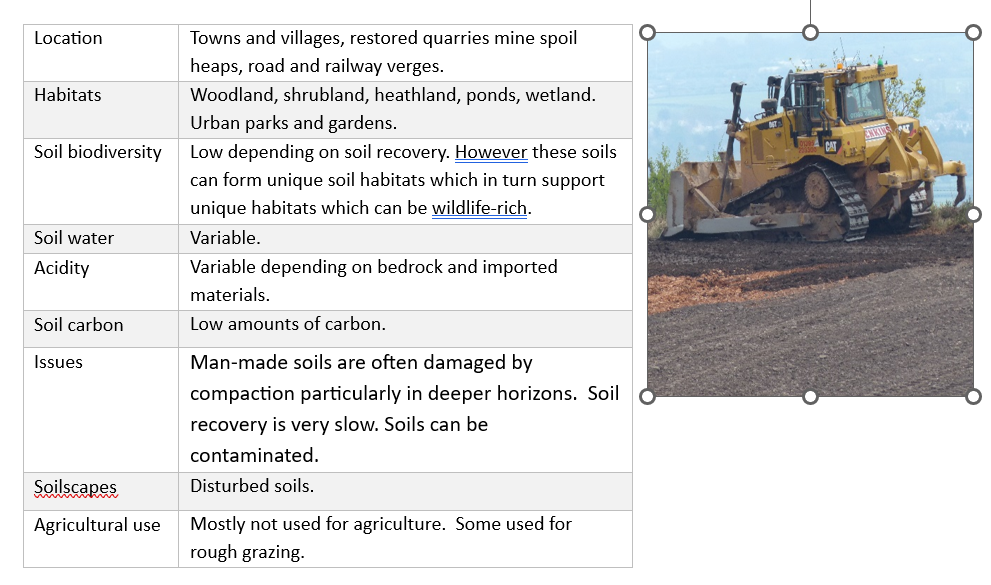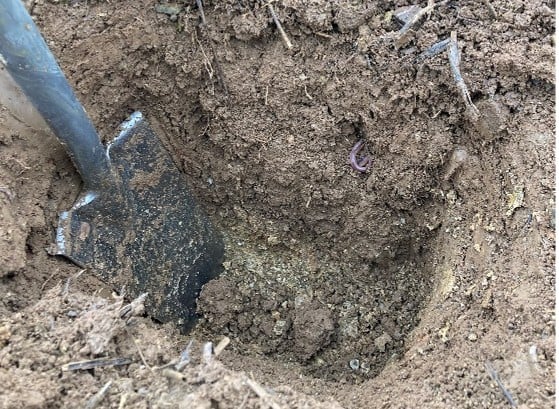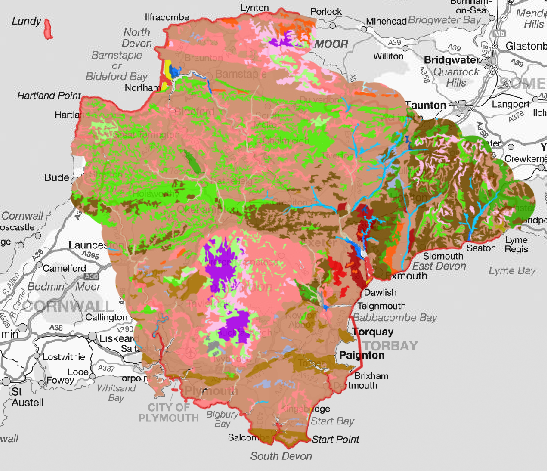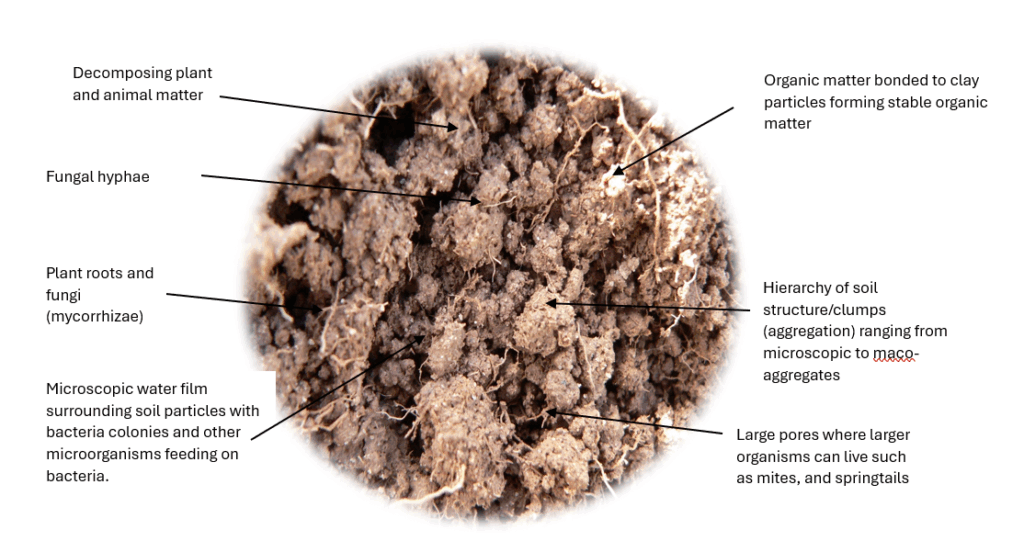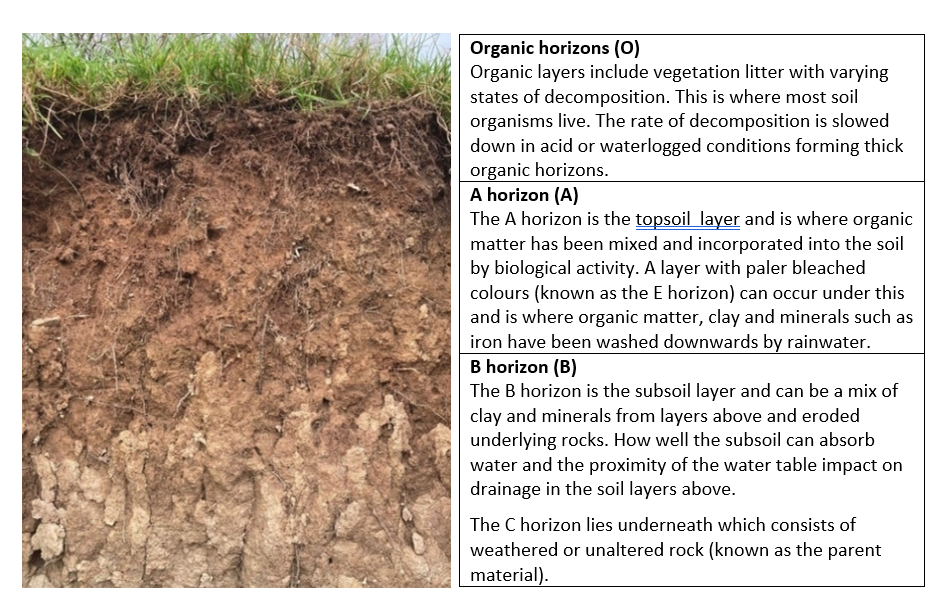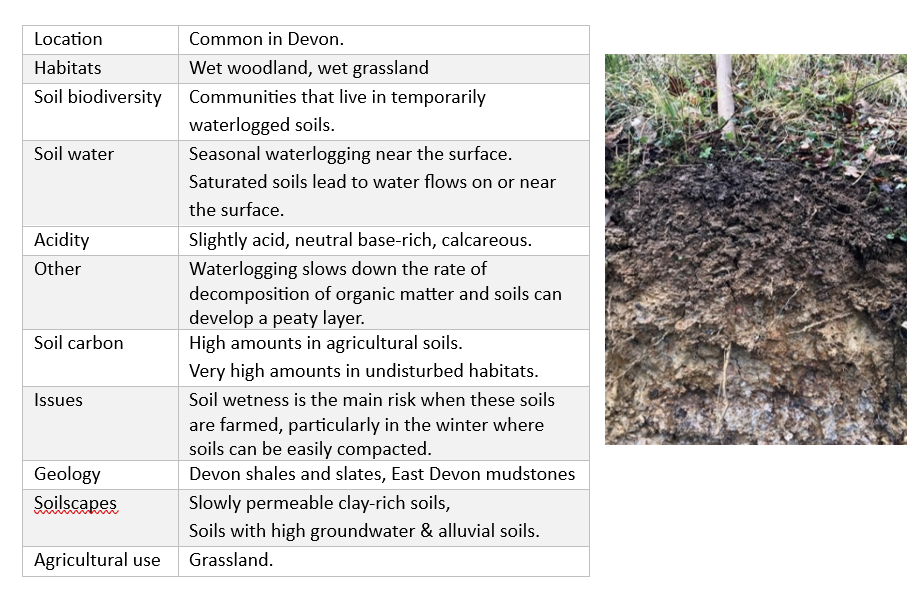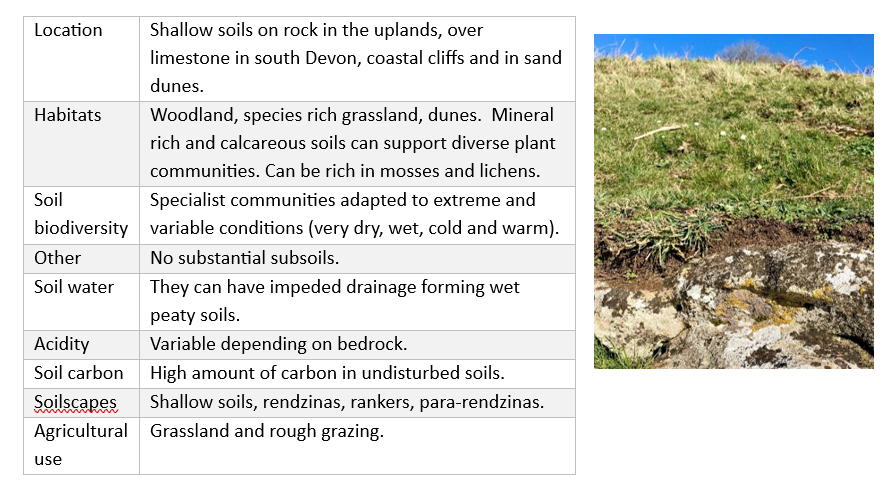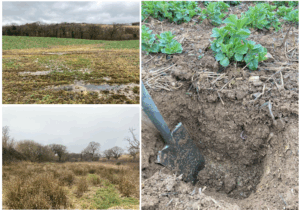A quarter of all known species live in the soil where they are invisible and unnoticed. A few examples are earthworms, springtails, insect larvae and billions of bacteria and fungi. These organisms play a vital role in helping to form the soil structure. Soil particles have a film of water around them which is where lots of microorganismsAn organism that can be seen only through a microscope. More (bacteria and fungi) live and are preyed on by larger organisms.
Earthworms, ants, and other animals such as moles that move the soil, are known as earth engineers because they change the structure of the soil by their burrowing activity. Earthworms ingest soil and produce casts which help to create new soil habitats.
Soil is not just a unique habitat in its own right. It is also critical for life including other wildlife habitats, farming, carbon storage, water storage and decomposition.
Soil types and Soilscapes in Devon
Simplistically soils are composed of weathered rocks (clay, silt and sand), dead and decaying vegetation and billions of tiny organisms. Different physical conditions create different soil. Key things are the type of underlying rock (granite, chalk or sandstone), climate (wet or dry), landform (flat, steep, wet or dry) and vegetation.
As Devon has such varied geology (rocks) and landscapes we have lots of different types of soil. Soil types have been amalgamated into Soilscapes in a national map (see below). This has been developed to help show how different soils underpin land use, including wildlife habitats. The colours on the map are different Soilscapes and show where different habitats are found across the county or where they could best be created.
Slider: Soilscapes and soil habitat (credit for Soilscapes map: Cranfield and OS)
- Bright purple = Blanket bogs on Dartmoor. Develop on very wet and very acid peat soils which form in the wet conditions on Dartmoor’s acidic granite rocks.
- Bright green = Wetlands (mosaics of mires, species-rich rush pastures, wet heath, wet woodland). Develop on wet, acidic soils known as gleys (see below). These wet landscapes are known as the north Devon Culm grasslands, the east Devon spring-mires and the Dartmoor Rhos pastures (see Heath, bog, mire and species-rich rush pasture for details).
- Bright red and orange = Heathlands on Haldon and the Pebblebeds. Develop on free draining, acidic soils known as podzols.
For more details on Soilscapes see the link to the Cranfield website in Find out more below. Also see the Soilscapes map on the LNRS Viewer (look under Other useful layers). The split layer has pop up boxes which give details on each Soilscape. These layers have been used to help create the High Opportunity Areas for habitat creation (see Mapping paper).
An overview of Devon’s geology will be added to the LNRS prior to publication.
Podzolic soils are a group of soils where organic matter, clay and minerals have been leached from the upper layers. This occurs in very acid conditions and areas with high rainfall. They are found in the uplands and can either be freely draining or have impeded drainage.

Peat soils develop in permanently waterlogged conditions. Raw peats consist of undecomposed plant material particularly mosses. Deep peat soils are found in blanket bogs on the moors. They are also found in wet flushes along valley spring-lines and permanently wet areas in river valleys.

Soils in urban areas, quarries and former mines are highly disturbed often with mixed soil horizons and altered by imported soils and materials.
